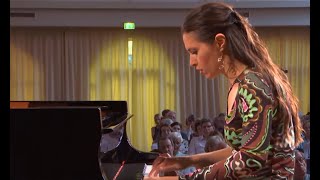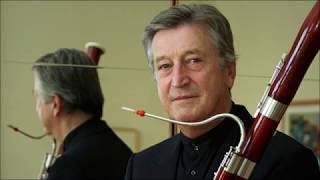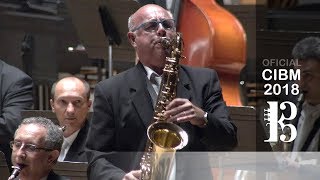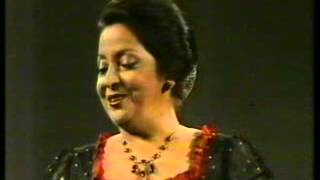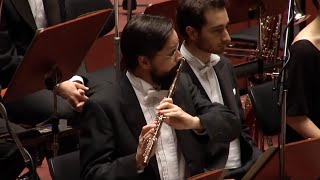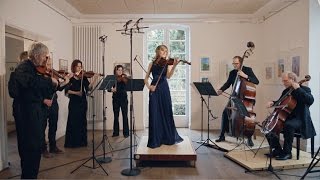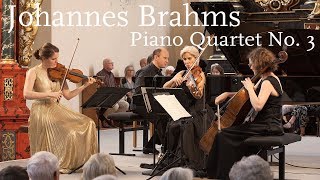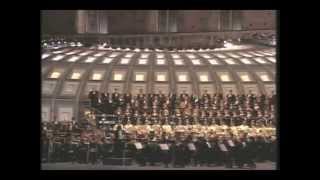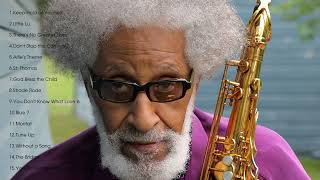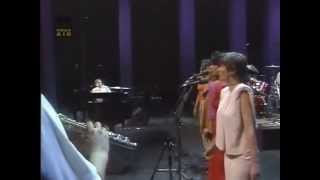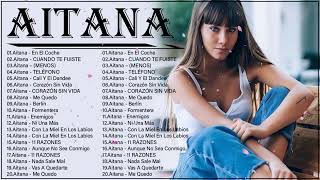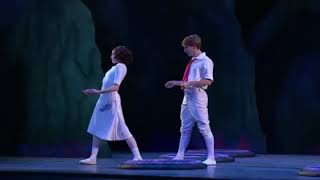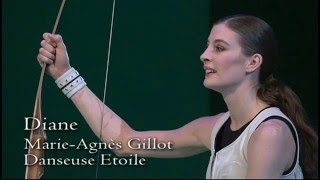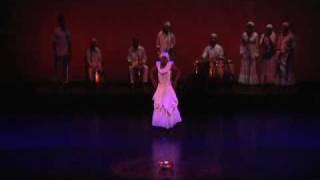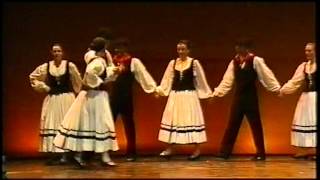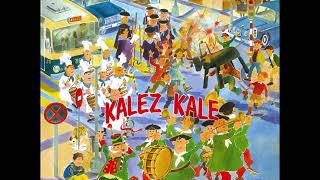Claude Debussy was born on August 22, 1862.
Recommended music videos for initiation to classical music
Claude Debussy (1862-1918) was a French composer considered to be the first composer of Impressionism . In 1884, with the cantata L'enfant prodigue, he won France 's most prestigious musical award, the Prix de Rome . Back in Paris , he was impressed by Wagner 's opera Tristan and Isolde , “the best I have ever heard”. Later he would be influenced by the structures of Javanese music, by the harmonic freedom of Rimski-Korsakov and by Erik Satie , similar to his approaches. In 1894 he premiered his Prélude à l'après-midi d'un faune ; four years later is when he achieved his international fame with his only finished opera Pelléas et Mélisande ; he was then 37 years old. Today Debussy is considered one of the most important composers of the 20th century .
The Two Arabesques (Deux arabesques), were written for the piano by Claude Debussy while he was still twenty years old. Although this is a fairly early work, the arabesques contain hints of Debussy 's developing musical style. The suite is one of the earliest Impressionist pieces of music, following the form of French visual art. Debussy seems to wander through modes and tonalities, and achieves evocative scenes, reflecting the celebrations of forms in nature carried out by the Art Nouveau artists of the time.
The second arabesque in G major, Allegretto scherzando opens with left-hand chords and right-hand trills. The piece makes several transpositions and explores a lower register of the piano. As in the first arabesque, notable is the touch of the pentatonic scale . Today it is offered to us by the German-Georgian pianist Inga Fiolia .
Antonio Vivaldi (1678-1741) was an Italian priest, violinist, and composer known as the red priest (“il prete rosso”). He was born in Venice and as a child learned to play the violin from his father; at the age of 15 he entered the Seminary and once ordained a priest, he could barely attend to his religious obligations due to his health problems; so he was appointed violin teacher in an orphanage where he taught theory and instrument classes. At the age of 40, he was appointed Chapel Master in Mantua where he wrote his famous Four Seasons . From there he moved to Milan , then to Rome ; later, again to Venice and finally, to Vienna where he would die. Throughout his life he composed almost 800 works, of which half were concerts, 40 operas, 60 religious works and numerous sonatas.
The bassoon ("basson") is a woodwind instrument with a double reed . It consists of a slightly conical tube folded on itself, with a length of approximately 155 cm, and a total distance from the hole of 250 cm. It was developed at the beginning of the 18th century and reached its current form in the 19th century . The bassoon owes its existence to the musical need to broaden the lower region of the woodwind sound. The instruments of his family are the bassoon and the contrabassoon , in addition to the instruments of the family of the oboe and the heckelphone , as these are also conical tube instruments in which the sound is produced by means of a double reed . In modern orchestras there are usually two to four bassoons so that there is a contrabassoon when necessary.
7 Bassoon Concertos : Today we offer these seven concerts for bassoon in the interpretation of the German bassoonist master Klaus Thunemann accompanied by the famous Italian group I Musici : 1 (0´5´´) in F major, RV 491 .-. 2 (7´56´´) in A minor, RV 499 .-. 3 (15´22´´) in E minor, RV 484 .-. 4 (26´18´´) in G major, RV 494.-. 5 (36´04´´) in G minor, RV 495 .-. 6 (44´55´´) in D minor, RV 481 .-. 7 (47´35´´) in C major, RV 472
The Malagueña is a flamenco style that is traditional from Malaga , in the autonomous community of Andalusia (Spain), hence its name. It comes from the old fandangos from Malaga . It became Flemish in style in the first half of the 19th century . This cante, which has a great melodic register, has its own dance that is danced in the province of Malaga and can be danced with a bolero suit that has a velvet body or with a marenga suit.
The Municipal Band of Valencia was created in 1903, under the direction of Santiago Lope , who conducted its first concert on December 8 of the same year. With maestro Lope at the helm, they achieved numerous successes, including three first prizes at the Bilbao International Contest , held in 1905. The Band celebrates some ninety performances per year, among which the concerts held at the Palau de la Música stand out. of Valencia , which it offers in the peripheral neighborhoods and towns of the Valencian Community , as well as in various European cities and in the protocol acts of the City Council . He is in possession of the Gold Medal for Merit in Fine Arts .
Today, under the baton of Rafael Sanz-Espert , the Municipality of Valencia offers us this Malaguenya de Barxeta written by maestro Azael Tormo .
Federico Chueca (1846-1908) was born in Madrid , in the Plaza de la Villa into a wealthy family; He received solfeggio classes from elementary school, which he attended at a select school, but his family forced him to abandon music to study medicine. Barbieri helped him orchestrate and conduct the works, and their great success convinced Chueca to leave medicine and dedicate himself to music. He is considered a self-taught musician with an innate talent and a knack for melody and rhythm, which led him to compose extraordinary pieces of music. He worked with several collaborators, but above all with Joaquín Valverde , in many of his works. He is currently considered one of the greatest representatives of the small genre (zarzuelas in one act).
La Gran Vía is a zarzuela in one act and five scenes with music by the maestros Federico Chueca and Joaquín Valverde and a libretto by Felipe Pérez y González premiered at the Felipe Theater in Madrid on July 2, 1886. It achieved such fame that they had to change some paintings, since being a current affairs magazine, it had to be modernized. This is how new paintings appeared, such as En la calle de Alcalá , or El bazaar de toyes . He is an exponent of the small genre taken to the field of the current affairs magazine, where the social and political concerns of the moment were exposed with good humor and a satirical sense. The script portrays with skill and satire, the news of the moment, showing on stage a great parade of types and comic situations of great effect.
Teresa Berganza Vargas (1933-2022) was a Spanish zarzuela and opera singer, frequently associated with characters from operas by Rossini, Mozart and Bizet , admired for her technique, musicality and stage presence. She studied piano and singing at the Madrid Conservatory , where she won first prize for singing in 1954. She made her debut in that city in 1955. Two years later she made her international debut at the Aix-en-Provence Festival . During the ten years Following she made her debut at La Scala , Glyndebourne festival, Royal Opera House , Metropolitan Opera House ... Her concert repertoire included Spanish, French, German and Russian songs. In 1994 she was elected a member of the San Fernando Royal Academy of Fine Arts , the first woman to obtain this distinction.
Recommended classical music videos
Musical Impressionism is a musical trend that arose in France at the end of the 19th century . When post-romanticism arrived, authors such as Gabriel Fauré or Camille Saint-Saëns experimented with Greek modes and timbre (aspects that would later be essential in impressionism ) but without going too deep. And so, at the end of the 19th century , impressionism arose ( whose name was already used in the painting of the years 1860-70 from the idea of expressing ideas in an insinuated way). In music, the use of the pentatonic scale and the Greek modes, harmonic and rhythmic freedom, and experimentation with timbre were the main characteristics of this movement, in which Claude Debussy is the most notorious impressionist author, along with Maurice Ravel . and Erik Satie .
Prélude à l'après-midi d'un faune (Prelude to a faun's nap), is a symphonic poem for orchestra composed by Claude Debussy , whose premiere took place in Paris on December 22, 1894, conducted by Gustave Doret . The composition was inspired by the poem L'après-midi d'un faune by Stéphane Mallarmé . Subsequently, Vaslav Nijinsky created for Sergei Diaghilev's Ballets Russes a ballet entitled La siesta de un fauno based on this famous piece by Debussy considered a milestone in modern music. According to Pierre Boulez , it marks the beginning of modern music. The chromatic melody in the flute solo of the overture is one of the most celebrated passages composed for orchestral music.
Leonardo Leo (1694 –1744) was an Italian composer born in San Vito degli Schiavoni (now San Vito dei Normanni). Leonardo Leo shares with his predecessor Alessandro Scarlatti and his contemporaries Francesco Durante and Francesco Feo , the glory of having founded the School of Naples , from which numerous dramatic composers of the first order emerged for a whole century. In his sacred music with an accompanied and concertato style, Leo preserves simplicity and is admired for the beauty of expression. Equally notable in the theatrical genre, Leo is noble, often pathetic and passionate and it is with these very simple means that he managed to make a great impression.
The concerto in D minor for viola is actually a transcription for viola of a concerto that was originally for cello; In this concert Leo adds a movement to the three traditional ones of the time: I (00:00) ANDANTE GRAZIOSO .-. II (3´50´´) WITH SPIRITO .-. III (07:21) LOVING .-. IV (11:20) ALLEGRO. Today Catriona Böhme offers it to us for the campanula viola , which is a viola that has four resonator strings (or more) in addition to the usual ones.
Johannes Brahms (1833-1897) born in Vienna , where he spent most of his life, was the composer of the most conservative romanticism against the progressive current led by Liszt and Wagner . His music is firmly rooted in the compositional structures and techniques of the classical masters and its formal structures faithfully follow the patterns of classicism, although it uses some of the coloring of romanticism and popular music. Of an eminently perfectionist nature, he wrote for piano, chamber ensembles, symphony orchestra, for solo voices and for choir. It was Hans von Bulow who proposed the "three B's" referring to Bach , Beethoven and Brahms as the three main pillars of the History of music.
The Piano and String Quartet No. 3 , in C minor, Op. Johannes Brahms 's 60 was sketched in 1856 and completed in 1875 in the summer vacation he spent in Ziegelhausen , near Heidelberg . The quartet was published in 1875, and the premiere took place in Vienna on November 18, 1875 to an eager audience. Richard Wagner and his wife Cosima were present. Many see in this quartet an image of the impossible love that Brahms felt for Clara Schumann . It is sometimes called the Werther Quartet in reference to Goethe 's The Sorrows of Young Werther .
The work is written for piano, violin, viola and cello, and is divided into four movements: I (0´0´´) ADAGIO- (1´02´´) ALLEGRO NON TROPPO, in C minor .-. II (9´44´´) SCHERZO: ALLEGRO, in C major .-. III (13´54´´) ANDANTE, in E major .-. IV (22´17´´) FINALE: ALLEGRO COMODO, in C major. The performers are: Veronika Eberle , violin; Veronika Hagen , viola; Monika Leskovar , cello; and Nelson Goerner , piano.
Piotr Tchaikovsky (1840-1893) was a Russian composer who graduated from the Saint Petersburg Conservatory and wrote works of different genres, although he achieved his greatest success with his ballets. In 1859 he obtained a position as a civil servant in the Ministry of Justice , which he would abandon at the age of three to be able to dedicate himself solely to music. His personal life was plagued by continuous crises since the death of his mother and his repressed homosexuality, which forced him into a marriage that only lasted a few months. He wrote more than 150 compositions, including piano works, quartets, suites, symphonies, concertos, chorales, cantatas, operas, and ballets. He died at the age of 53 and is considered one of the greatest composers in history.
The Solemn Overture 1812, Op . 49 is a romantic overture written by Russian composer Pyotr Ilyich Tchaikovsky in 1880. The piece was written to commemorate the victory of the Russian resistance in 1812 against the advancing Grande Armée of Napoleon Bonaparte . It premiered in Moscow on August 20, 1882, conducted by Ippolit Al'tani and later, in 1891 conducted by Tchaikovsky himself, at the opening of New York's Carnegie Hall . The final climax, in the original score, includes a salvo of cannon shots and pealing of bells. The overture has become a common accompaniment to fireworks displays on US Independence Day ; Furthermore, the 1812 Overture is in one of Tchaikovsky 's most popular works.
The work begins with a religious melody from the Russian Orthodox Church , played by eight cellos and four violas (sometimes, like the one we are seeing today, this part of the overture is sung by an a cappella choir). It continues with a mixture of traditional and military melodies, which represent the growing anguish of the Russian people when they find out they are invaded by the French army. The piece continues with a march introduced by brass, where armies are heard charging to face each other in the Battle of Borodino . A repetitive and triumphant fragment of the French national anthem, La Marseillaise , serves to represent the invading army and Napoleon 's victory over the Russians. Next, a diminuendo in the music represents the Russian withdrawal, avoiding direct confrontation with French troops while leaving scorched earth behind. The brass march and the fragment of La Marseillaise sound again, to indicate the entry of the French into a burning Moscow . The fragment of La Marseillaise continues to play, now in diminuendo, indicating the withdrawal of the French troops, while a crescendo indicates the Russian siege. Five cannon shots accompany the advance of the Russians expressed in string instruments and brass, which prepare the field for the triumphal closing with the counterpoint between the leitmotiv representing the Russian army and the Russian imperial hymn God save the Tsar , supported by eleven cannon shots and a ringing of bells.
Recommended music videos for all tastes
Sonny Rollins (1930) is considered one of the great tenor saxophonists in the history of jazz along with Coleman Hawkins, Lester Young, Ben Webster, Dexter Gordon and John Coltrane . His styles are bop and hard bop , although on several occasions he has approached free jazz . In his style, the presence of Coleman Hawkins has always been noted, due to his dense and voluminous sound, and Charlie Parker , due to the freedom of improvisation. Its recourse to folklore (the Caribbean, the calypsos...), its repeated exposition of themes, its prolongation of the introductions or its tendency to quote other themes or authors is frequent. Several of his compositions, such as "St. Thomas", "Oleo", "Doxy", "Airegin" and "Tenor Madness" are considered jazz standards.
Christina Aguilera (1980) is an American singer, songwriter, actress, model, fashion designer, producer, and businesswoman. She began acting and singing as a child, through roles in stage productions and television shows including Star Search and Mickey Mouse Club . Aguilera 's work has won numerous awards, including six Grammy Awards and a Latin Grammy . She was the biggest seller of the 2000s for material singles, along with Madonna .
Tom Jobim (1927-1994) was a Brazilian composer, arranger, singer, guitarist, and pianist of bossa nova , popular music from his country, and classical music. He is considered one of the greatest exponents of Brazilian music, and one of the great composers of popular music of the 20th century . He was the artist who internationalized bossa nova and, with the help of major American artists, fused it with jazz. Jobim 's musical roots lie in classical music through Claude Debussy, Frédéric Chopin , and Heitor Villa-Lobos . Added to this are Brazilian samba and folklore , cool jazz harmonies and Broadway musicals . Among his abundant production, the song " Garota de Ipanema " stands out, one of the best-known Brazilian melodies in the world.
Aitana (Barcelona, June 27, 1999) is a singer, songwriter and actress, who became known after participating in the ninth edition of Operación Triunfo (2017), where she obtained second place. Therefore, she was one of the six candidates to represent Spain in the Eurovision Song Contest 2018, with " Arde " solo and " Lo malo " in duet with Ana Guerra , which was a success in sales and streaming. Throughout her career, she has been awarded an Ondas Award , an MTV Europe Music Awards , four Odeón Awards , six Los 40 Music Awards , a Radio Disney Music Awards and another Nickelodeon Kids' Choice Awards , in addition to having received two nominations at the Latin Grammy Awards , including best new artist.
Recommended peculiar videos
Jeux (Games) is a ballet written by Claude Debussy . Described as a "danced poem"), it was written for Diaghilev 's Ballets Russes and premiered on 15 May 1913 at the Théâtre des Champs-Élysées in Paris , under the direction of Pierre Monteux . The play was not well received and was soon overshadowed by Stravinsky 's The Rite of Spring , which was released two weeks later. There are around sixty different tempo markings in the work, enough for Émile Vuillermoz to describe the score as changing "speed and nuance every two bars". Jeux 's thematic motifs are similarly very short, often two bars long or built from two single-bar building blocks.
Léo Delibes (1836 -1891) was a French romantic composer. His mother was a musician and his grandfather an opera singer. His nephew Frédéric was the paternal grandfather of the Spanish writer Miguel Delibes . He began his musical studies at the Paris Conservatoire in 1847, where he was a student of Adolphe Adam . As a composer, he achieved real fame in 1870 with the success of his ballet Coppélia; Among his other ballets, Sylvia , written jointly with Léon Minkus ; the Pizzicato of this ballet is very popular, one of Delibes ' greatest successes. He also composed several operas and operettas, a mass, a cantata, and occasional music for the theater, such as dances and ancient airs.
Sylvia , originally Sylvia ou La Nymphe de Diane (“Sylvia or the Nymph of Diana”) is a ballet in three acts, choreographed by Louis Mérante and music by Léo Delibes , premiered on June 14, 1876 in Paris . Sylvia is a remarkable classical ballet, with some peculiarities that make it unique due to the mythological setting of Arcadia , its creative choreography, its extensive set design, its great influence on the arts and, above all, its remarkable score. Today we offer the entire ballet with Marie-Agnès Gillot, José Martínez and the Ballet of the National Opera of Paris .
Haitian dance. In 2020, master traditional dancer Portsha Jefferson joins apprentice Halima Marshall in the study of Haitian folk dance rooted in the African spiritual practices of Vodou . Learning will include the historical study of Haitian folk dance forms and styles, as well as the meaning, energy, and spirit attached to them. Dance is our route to find our personal truth, our route to self-discovery. We are artistic vessels, mediums and servants of the community, who embody the Spirit , our life force, the person within our person, the part of us that never dies, that is eternal, infinite and unlimited. (extracted from the Rara Tou Limen website )
Branlea or bralea is a dance of men and women, danced in an open circular chain. The chain or rope goes from the far right, with the movement of the set going counterclockwise. With a rather serious and heavy, ceremonial and solemn style, it is usually considered a social act and, more specifically, it is used to initiate or, more often, close festive dance acts. The name Branle has not been preserved anywhere else in the highlands of the continental Basque Country and has its origins in the chain dance of the same name, which was adopted by European aristocrats, especially in France and England , in the 17th century . . ( Extracted from Auñamendi Euxko Entziklopedia )
Today it is offered to us by the group Argia Dantzari Taldea directed by the teacher Juan Antonio Urbeltz .
Recommended music videos for children
Various Wikipedia articles have been used to write these texts.
The texts of Videomusicalis are written in Basque, Spanish and English.





